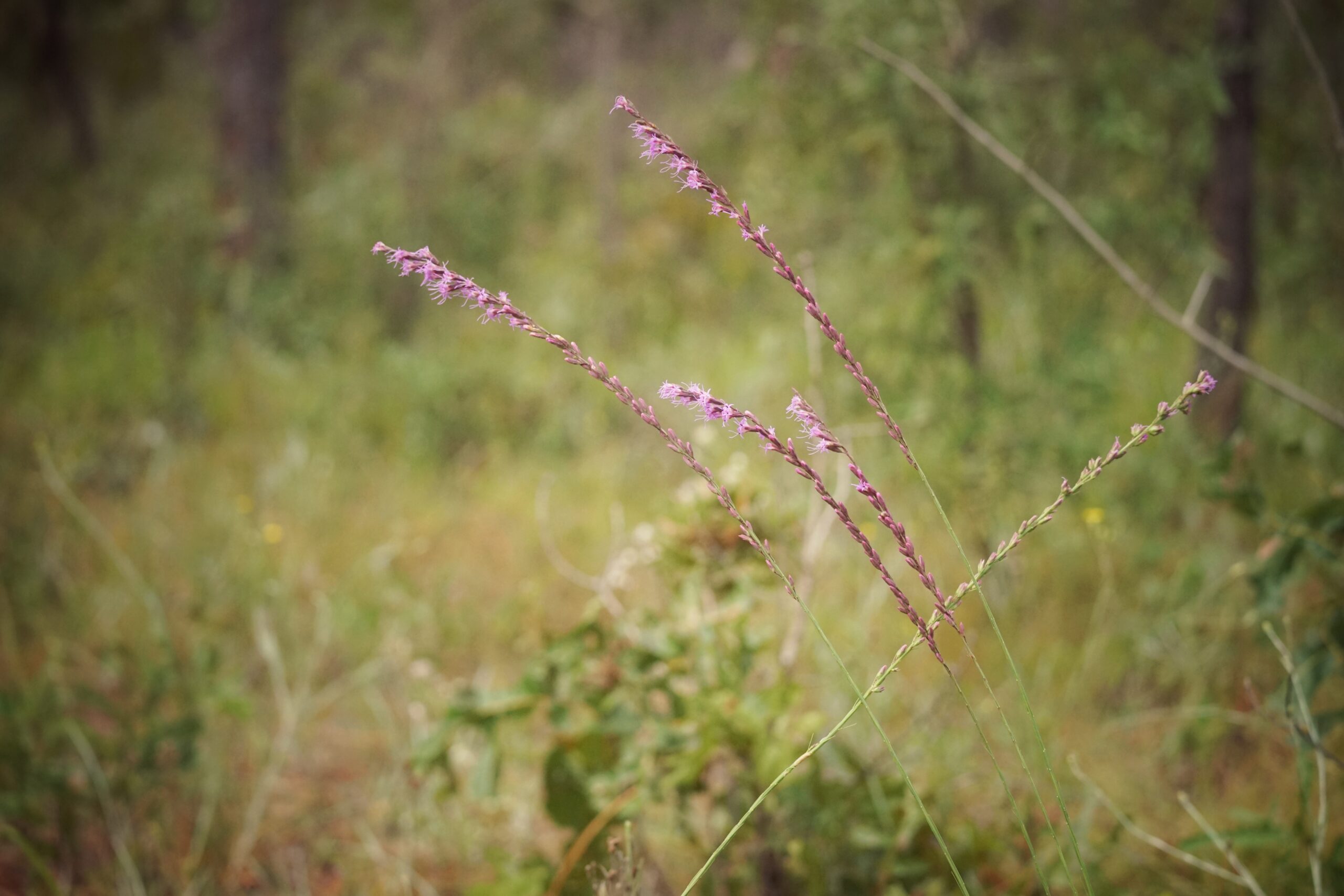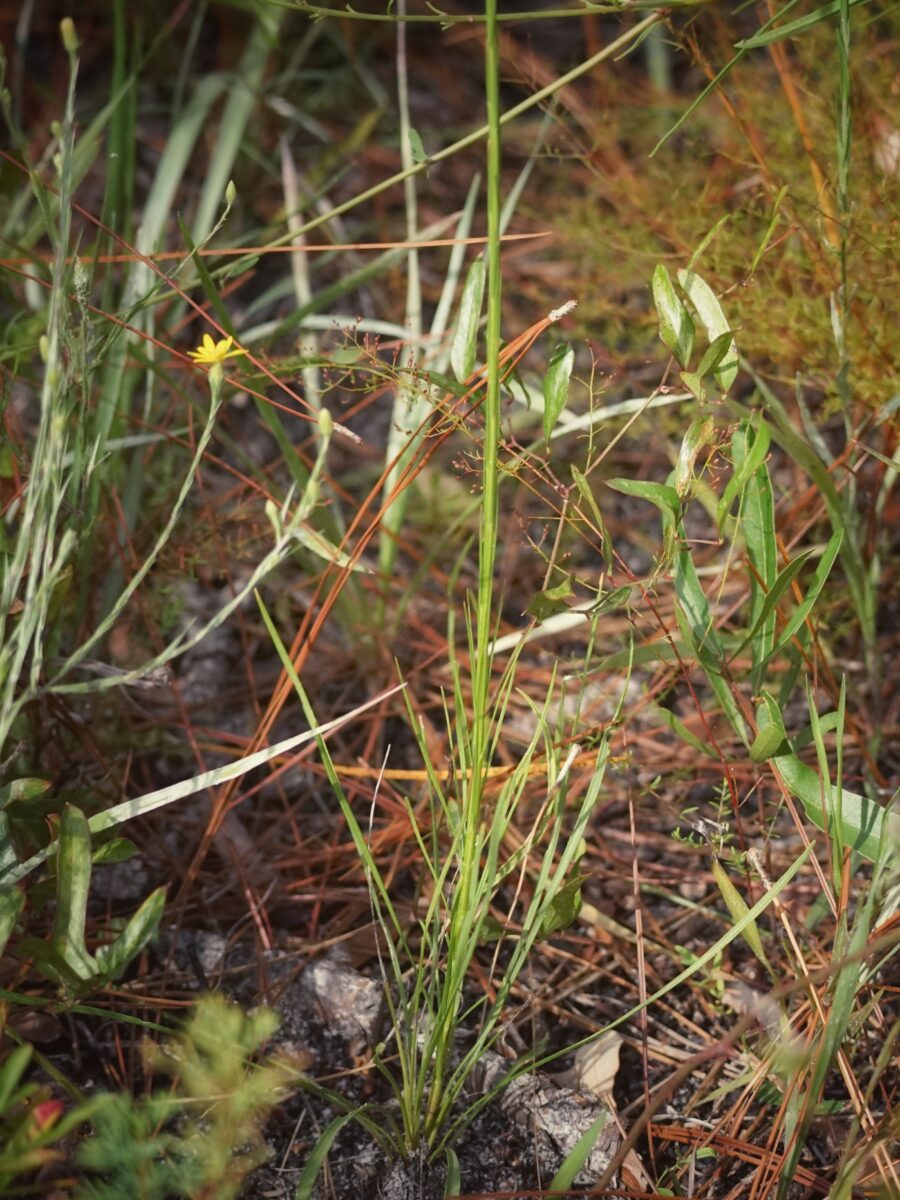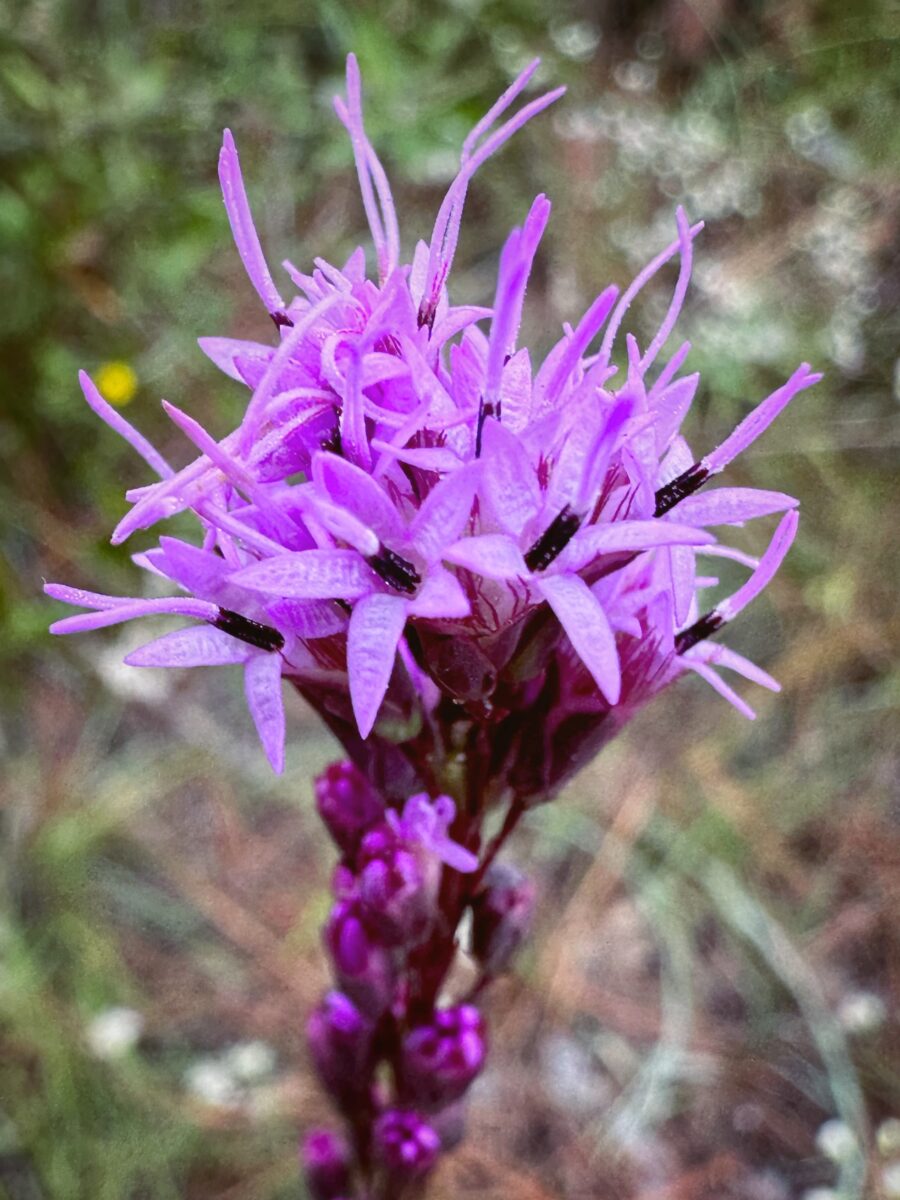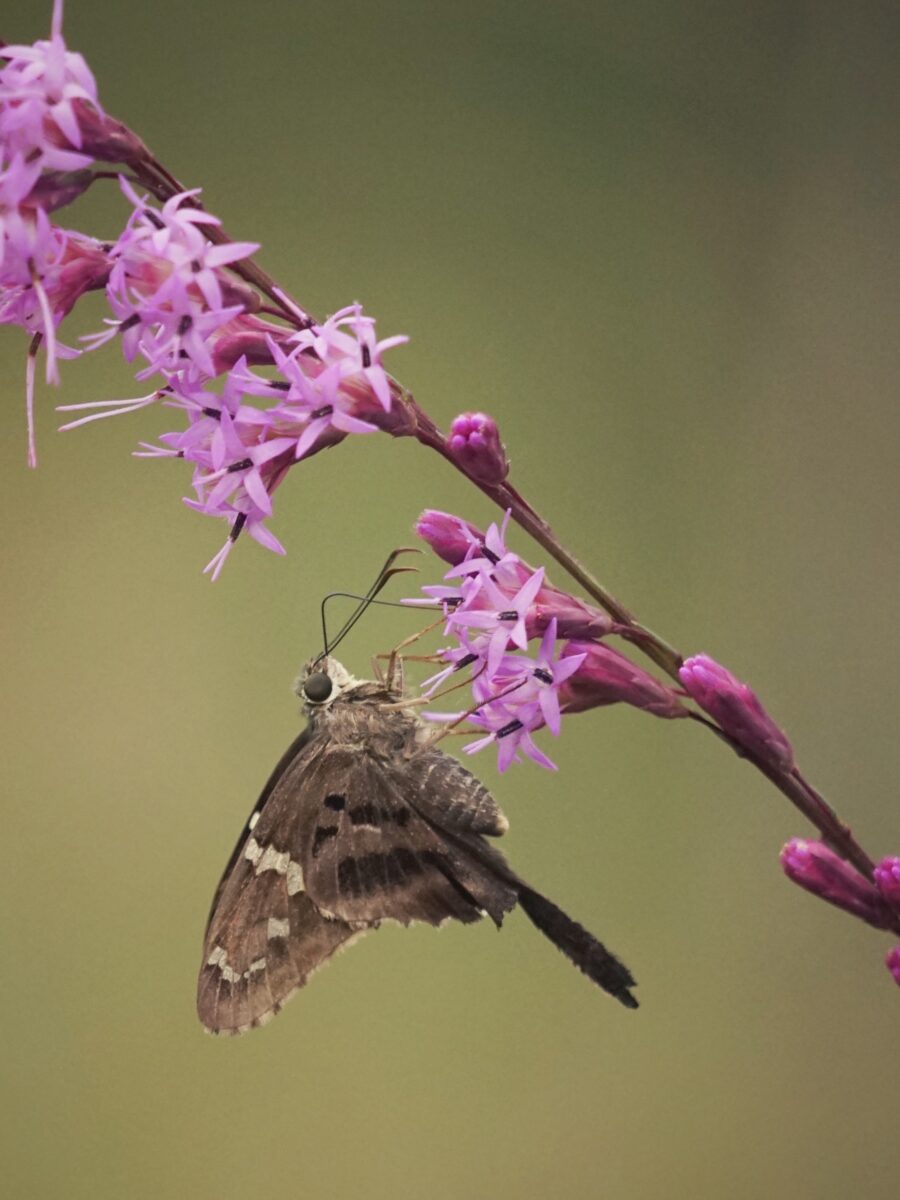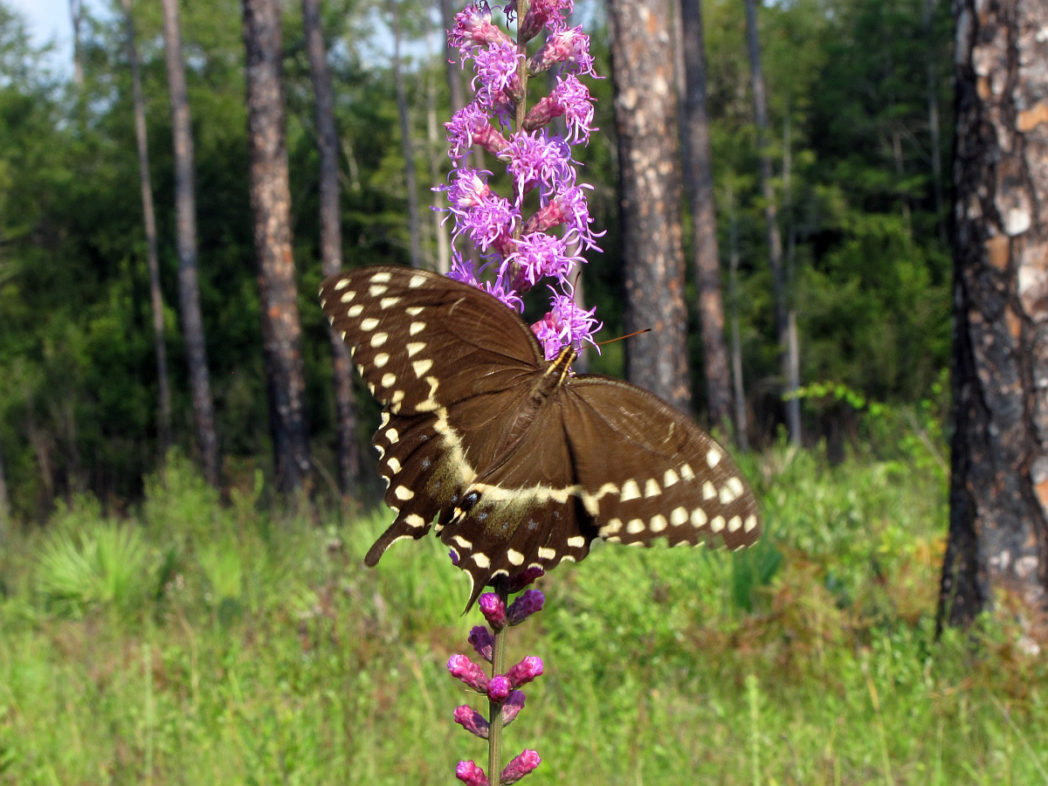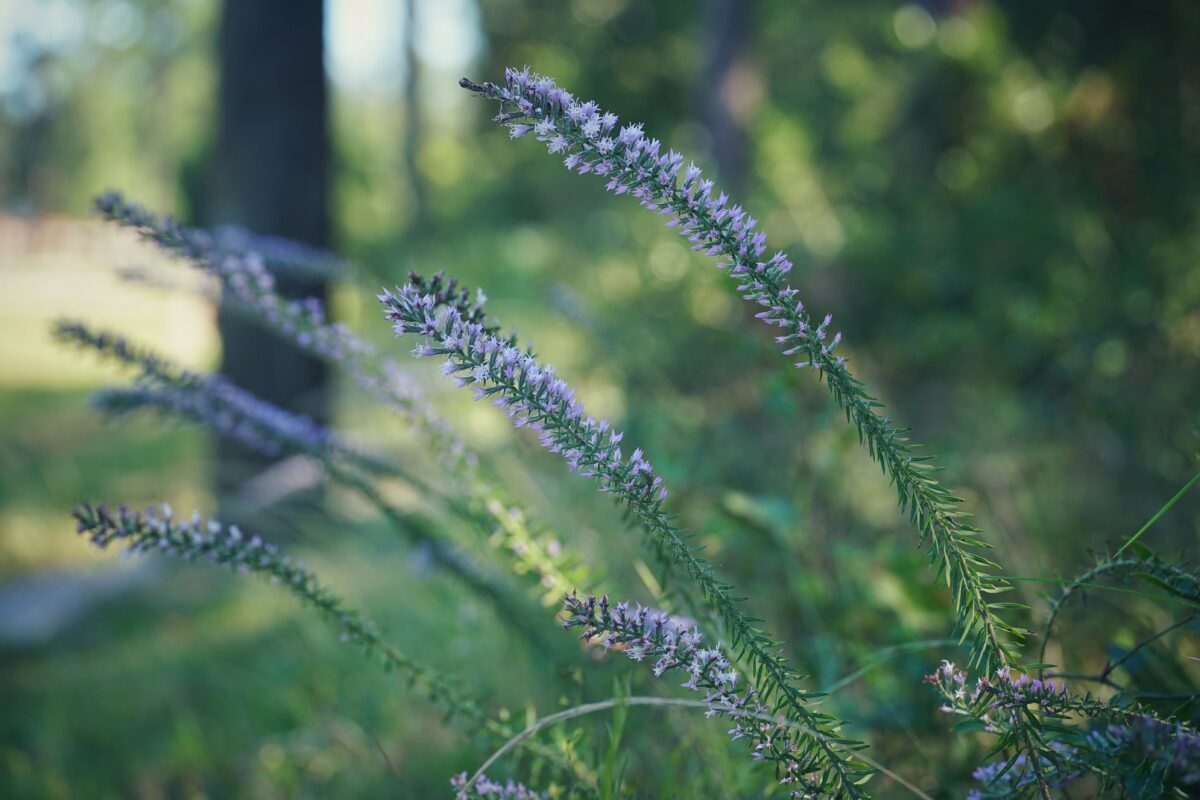Shortleaf gayfeather
Pictured above: Shortleaf gayfeather (Liatris tenuifolia) by Emily Bell. Click on terms for botanical definitions. View post as a PDF.
With 16 species of Liatris creating stunning seas of violet to lavender in natural areas and on roadsides across the state, purple is one of Florida’s signature fall colors. Shortleaf gayfeather (Liatris tenuifolia) is endemic to the Southeastern Coastal Plain, from Alabama to South Carolina. It thrives in the dry, well-drained sands of scrub and pine flatwoods. The mid to late fall blooms are a valuable food source for many pollinators.
Dormant in winter, Shortleaf gayfeather sends out new 4- to 10-inch narrow linear basal leaves in spring. In summer, a glabrous stem adorned with alternate short needle-like leaves emerges and a long flower spike develops. The small lavender flowers are tubular, 5-lobed corollas with elongated styles that bloom from the top of the spike down. Seeds are dried brown cypsela.
The Atlas of Florida Plants recognizes a separate variety of this species, Liatris tenuifolia var. quadriflora, which some taxonomists split into a separate species as Liatris laevigata. It can be distinguished by its broader basal leaves.
Family: Asteraceae (Aster, composite or daisy family)
Native range: Throughout, but with absences in many south Florida counties
To see where natural populations of Shortleaf gayfeather have been vouchered, visit florida.plantatlas.usf.edu.
Lifespan: Perennial
Soil: Well-drained sand
Exposure: Full sun
Growth habit: Up to 4 feet tall
Propagation: Seed
Florida regions of landscape suitability: North, Central, South
Garden tips: A wonderful addition to a mixed wildflower meadow, Shortleaf gayfeather provides vibrant fall color and attracts many butterflies and bees.
Plants are available from nurseries that specialize in Florida native plants. Visit www.PlantRealFlorida.org to find a nursery in your area.
Learn more about about Shortleaf gayfeather from The Institute of Regional Conservation and the Florida Native Plant Society.
For information on other Liatris species, see these resources:

